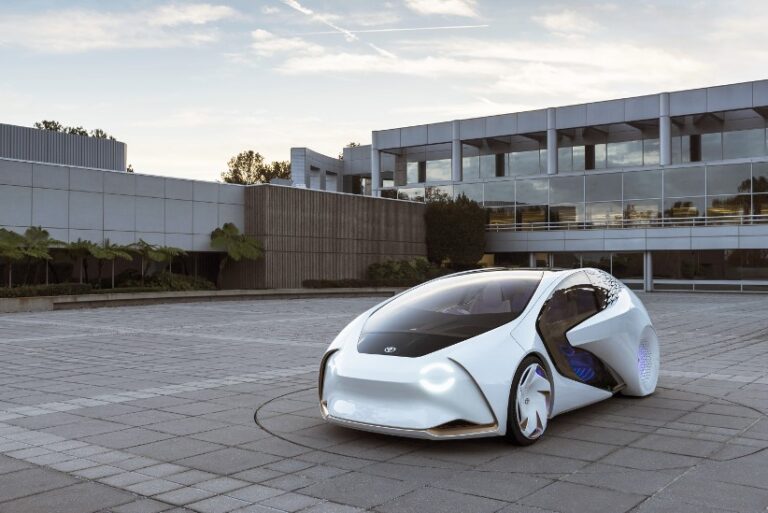Toyota has unveiled the Concept-i, a vehicle that demonstrates Toyota’s view that the starting point for the vehicles of tomorrow should be the people who use them.
Revealed at the 2017 Consumer Electronics Show in Las Vegas, Concept-i represents a friendlier, people-focused approach to future mobility.
It has been produced by Toyota’s CALTY design centre in California, with user experience technology sourced from the Toyota Innovation Hub in San Francisco.
The basic philosophy for the design is “kinetic warmth,” a belief that mobility technology should be warm, welcoming and, above all, fun.
Concept-i uses an advanced artificial intelligence (AI) system that builds a relationship with the driver, anticipating their needs, spurring their imaginations and improving their lives.
The AI system uses advanced, automated vehicle technologies to help improve driving safety, while allowing users to choose automated or manual driving under certain conditions.
Concept-i will seamlessly monitor driver attention and road conditions with the goal of increasing automated driving support as necessary to enhance driver engagement or help navigate dangerous driving conditions.
Built from the inside out, Concept-i is centred on a next-generation user interface that provides the platform for the vehicle’s AI agent, nicknamed “Yui”, that uses light, sound and even touch to communicate critical information.
Instead of using screens on the centre console, information is revealed where and when it is needed. Coloured lighting in the footwells indicates whether the vehicle is in automated or manual drive; discreet projectors in the rear deck relay images on the seat pillar to warn about blind spots; and a next generation head-up display helps keep the driver’s eyes and attention on the road.
Even the vehicle’s exterior is designed to enable Concept-i to engage with the world around it. Yui appears on the door panels to welcome driver and passengers as they approach the vehicle. The rear of the car displays messages about upcoming turns or warnings of potential hazards, while the front communicates whether automated or manual drive is engaged.
Bob Carter, Toyota senior vice president of automotive operations in the USA, said: “At Toyota we recognise that the important question isn’t whether future vehicles will be equipped with automated or connected technologies, it is the experience of the people who engage with those vehicles. Thanks to Concept-i and the power of artificial intelligence, we think the future is a vehicle that can engage with people in return.”







